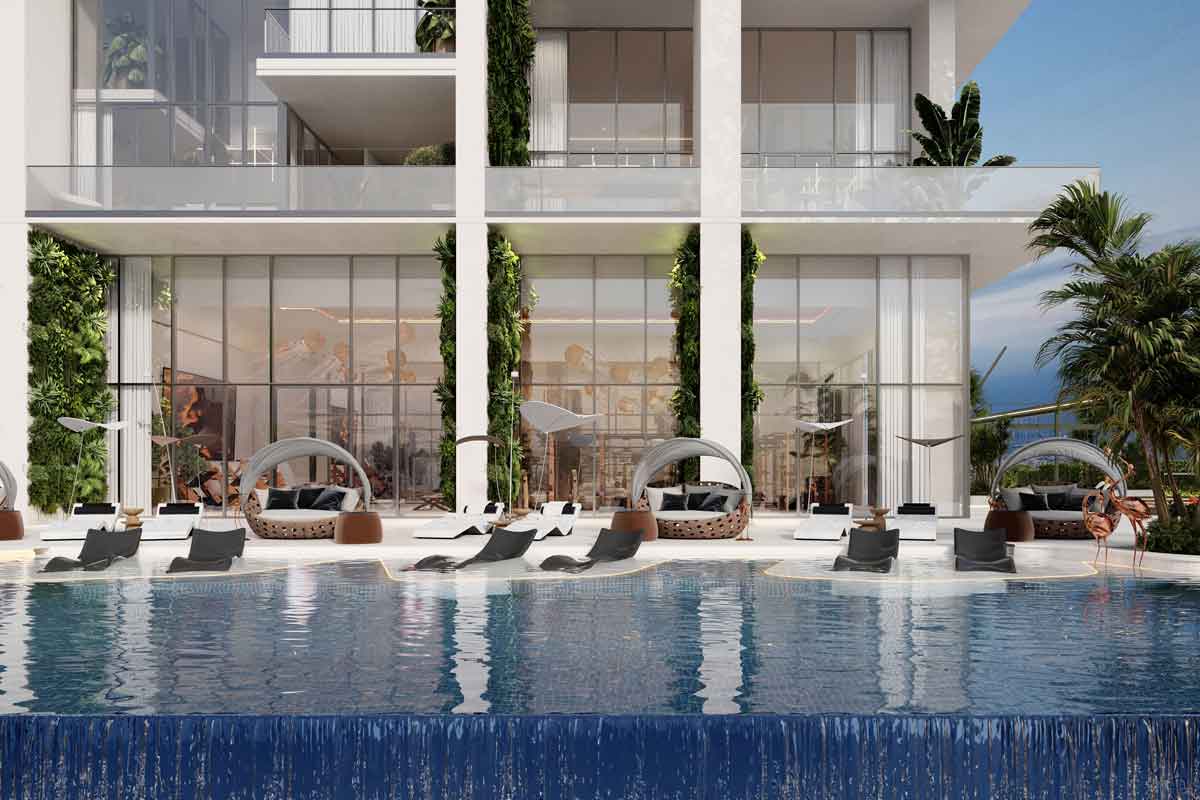The term “market correction” often evokes unease in real estate circles, conjuring images of declining prices and reduced demand across the board. Yet, Dubai’s real estate landscape suggests a different trajectory—one I refer to as a “developer correction.” Unlike a market correction, which impacts the entire industry uniformly, a developer correction shifts the pressure onto individual developers, compelling them to refine their strategies and remain competitive in a rapidly maturing and discerning market.
Dubai’s real estate sector remains fundamentally strong, driven by robust demand, an expanding population, and its global reputation as a premier destination for living and investment. However, the level of competition among developers is higher than ever before. This intensifying environment means developers cannot rely on market momentum alone to sell their projects. Instead, they must stand out to craft and adopt deliberate strategies that align with buyer expectations around pricing, payment plans, marketing, and overall value.
How developers can stay ahead
Pricing plays a critical role in this correction. Developers need to strike a delicate balance between achieving strong price points per square foot and ensuring consistent sales velocity. Unrealistically high pricing can stall demand, making it difficult for a project to gain momentum—and in today’s market, momentum is everything.
Developers typically have one opportunity to generate strong early demand for an off-plan project. If pricing is misaligned and fails to create urgency, the sales journey becomes an uphill battle. Projects that linger on the market for too long often see buyer confidence and interest decline, making it harder to sustain long-term price appreciation and buyer engagement.
This underscores the importance of pricing strategies that align with absorption goals. Developers must carefully evaluate whether their desire for higher price points is worth the trade-off of a prolonged sales cycle—particularly in a market where buyers have more choices than ever. Those who fail to differentiate their offerings or position their pricing correctly risk losing out to better-positioned projects.
For instance, Kempinski Marina Residences, which we launched recently, surpassed AED 1 billion in sales in record time. Its success wasn’t just about the brand name—it was a combination of strategic pricing, prime location, strong marketing, and broker engagement.

Post-handover payment plans (PHPPs) are no longer just an option in real estate—they’ve become a strategic play for developers. In a market where affordability is key, and competition is fierce, developers are leaning into these flexible payment structures to attract buyers and sustain momentum. Our latest research reveals that 75 per cent of projects offering PHPPs now extend for at least 24 months, with half stretching to 36–42 months post-handover. This isn’t just a passing trend—it’s a clear response to evolving buyer expectations.
By easing financial barriers and providing peace of mind, these plans are not only expanding the buyer pool but also ensuring developers maintain steady cash flow and market visibility. As the demand for such structures continues to grow, developers who adapt will find themselves ahead of the curve, while those who resist risk being left behind. For developers, PHPPs present both opportunities and challenges. Those who resist adopting such buyer-centric payment strategies risk falling behind in a market where financing flexibility has shifted from being a bonus to an essential expectation.
Another critical aspect of this developer correction is the increasing need for a well-executed strategic marketing strategy that can be the defining factor in whether a project succeeds or struggles. Developers who underinvest in these areas or fail to create engaging, well-positioned campaigns will inevitably be overshadowed by competitors willing to make these strategic investments. At the same time, developers need to invest in impactful marketing campaigns that go beyond generic promotions. Projects that tell a compelling story, highlight a unique lifestyle offering, and leverage immersive experiences generate higher engagement and buyer interest.
In today’s fiercely competitive real estate market, strong broker relationships are no longer a luxury—they’re a necessity. Developers who recognise this are doubling down on competitive commissions, structured incentives, and timely payouts to keep top agents engaged.
And the numbers don’t lie: as commission rates rise, so do results. While the industry once hovered around a 4 per cent commission norm, we’re now seeing that edge up to 5 per cent—and projects offering over 6 per cent have seen an explosive surge in broker engagement, jumping from a mere 2 per cent in 2023 to 16.7 per cent in 2024. Even more telling, commissions in the 7–8 per cent range, once a rarity, have skyrocketed from 1 per cent to 11.1 per cent year-over-year.
This isn’t just a trend; it’s a strategy. Developers who understand that brokers are the real catalysts for sales success are leveraging incentives more aggressively than ever—because in a market where inventory is high, and differentiation is key, the right commission structure can make all the difference.
Brokers play a central role in driving off-plan sales. Developers who offer competitive commissions, structured incentives, and timely payouts build stronger relationships with brokers, ensuring higher sales momentum and sustained interest in their projects.
Additionally, sales centres play a pivotal role in shaping the customer journey and influencing purchase decisions. A well-executed sales centre is more than just a showroom; it is an experiential space that allows buyers to immerse themselves in the vision of the development. From high-quality model units to interactive digital displays and expert sales consultants, sales centres bridge the gap between aspiration and reality, transforming interest into commitment.
At Devmark, we’ve seen firsthand how an immersive sales environment strengthens buyer engagement. Recently, we took a different approach for The Chedi Private Residences, hosting a sales pop-up at the Mondoir Art Gallery, creating a space that embodied The Chedi’s refined aesthetic. The setting aligned with the brand’s design-led approach, offering buyers a curated experience that felt as considered as the residences themselves. Similarly, for W Residences Dubai – JLT, we developed a dedicated sales gallery at Boulevard Plaza, complete with a fully built-out show apartment. Buyers could walk through the space, experience the finishes firsthand, and get a true sense of what it means to live in a W Residence.

Developers who invest in sophisticated sales centres create a controlled environment where they can effectively communicate the project’s unique selling points, showcase finishes and layouts, and provide a tangible sense of the lifestyle on offer. This level of engagement significantly enhances buyer confidence, reducing hesitations and accelerating decision-making. In a market where differentiation is key, a compelling, immersive sales experience can be the factor that tips the scales in favour of one project over another.
Ultimately, the notion of a developer correction reflects a maturing real estate market where success is determined by a developer’s ability to adapt, innovate, and execute. It is no longer enough to simply build; developers must actively manage the lifecycle of their projects, from pricing and payment plans to marketing and broker engagement. Projects that fail to gain traction early will face diminishing returns, while those that achieve early success can capitalise on momentum to sustain buyer interest and secure higher revenues over time.
This correction also signals opportunity. Developers who prioritise strategic pricing, invest in marketing, and embrace buyer-friendly payment plans will set themselves apart in a competitive market. By aligning their approach with the needs of today’s buyers, they not only secure their own success but also contribute to elevating the overall standard of Dubai’s real estate industry.
The message is clear: the market remains strong, but only those who innovate and adapt will thrive. Developers who understand the importance of momentum, balance absorption objectives with pricing strategies, and align their offerings with buyer demands will define the future of Dubai’s real estate market.









